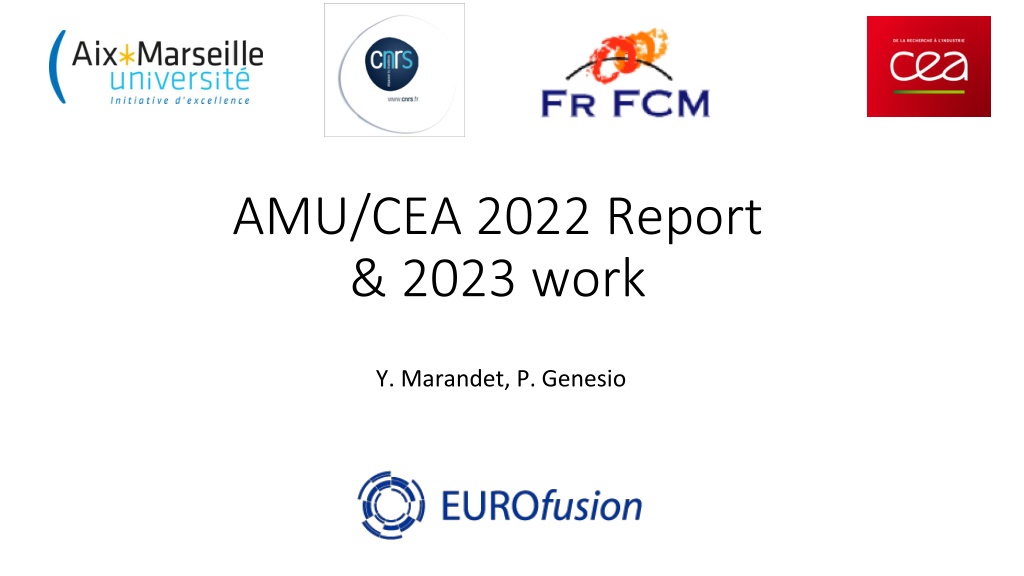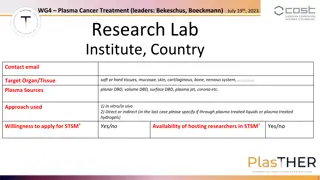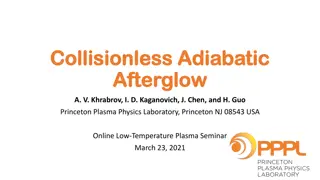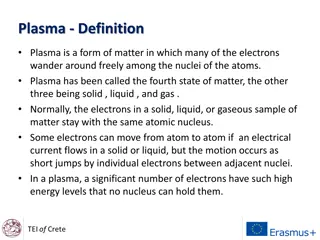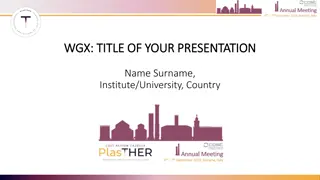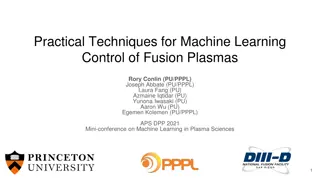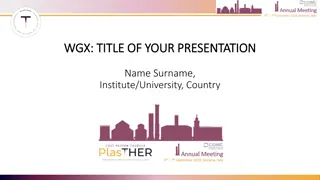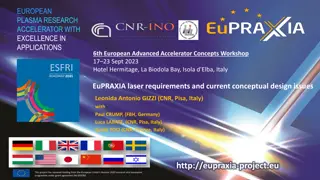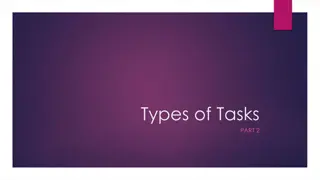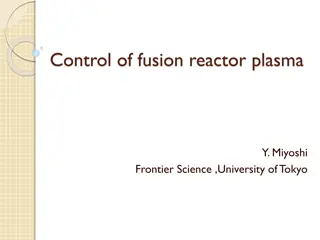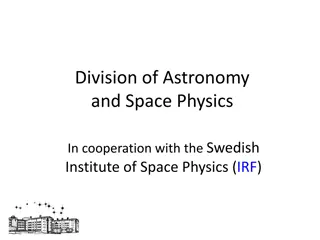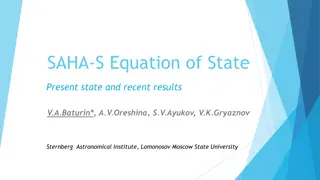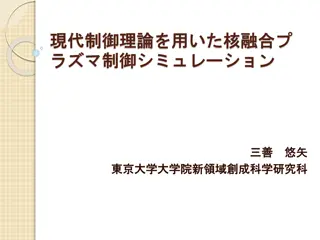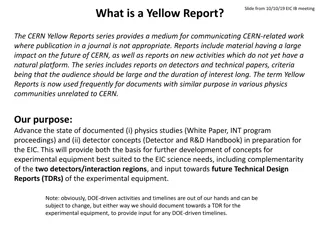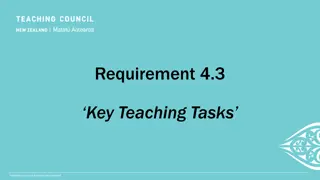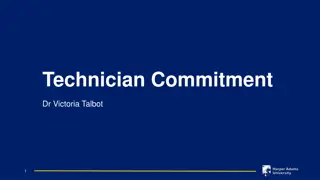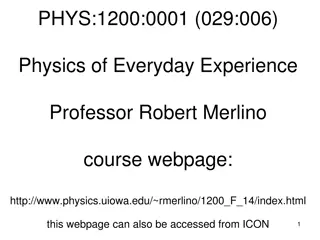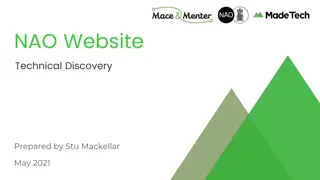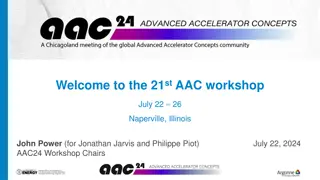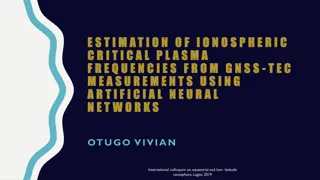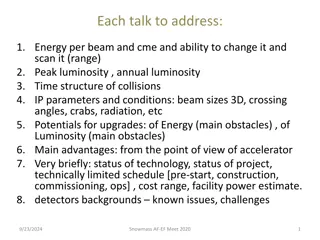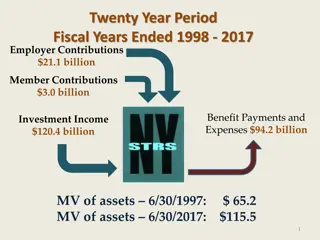Technical Tasks and Contributions in Plasma Physics Research
This collection of reports details the technical tasks undertaken in 2022 by AMU in managing interfaces with ACH for Eiron and IMAS, as well as contributions to EIRENE_unified. It also discusses the parallelization of rate coefficient calculations and the implementation of MPI parallelisation for efficiency in plasma physics research.
Download Presentation

Please find below an Image/Link to download the presentation.
The content on the website is provided AS IS for your information and personal use only. It may not be sold, licensed, or shared on other websites without obtaining consent from the author. Download presentation by click this link. If you encounter any issues during the download, it is possible that the publisher has removed the file from their server.
E N D
Presentation Transcript
AMU/CEA 2022 Report & 2023 work Y. Marandet, P. Genesio
Outline AMU tasks in 2022 Manage the technical interface with ACH for Eiron : guidance on relevant mechanisms, on Monte Carlo principles, on how to compare to EIRENE Manage the technical interface with ACH on IMAS : guidance on input/output format, providing test cases TBD in 2023: coordinate ACH IMAS work with what N. Rivals has done in the framework of his PhD co-funded by ITER
Contribution to EIRENE_unified Remove B2 spill-over into EIRENE in forks/iter/develop to prepare for the eirene_unified branch (branches species_rescaling_dr3- PB_AMU & compiling_issues_JSON8.2.5_gfortran) after meeting at IO with Xavier Bonnin Now merged into EIRENE_unified by Petra
Parallelization of the rate coefficient calculation in preparation for the use of CRM models, needed to reduce overhead time (preparation of MC calculation in the main loop) branch parallel_ColRad_WIP so far MPI only
How are collisional radiative model called ? # deal with reaction types sequentially call xstei call xstcx call xstel call xstpi If (my_pe == 0) then do J=1,NSBOX call eirene_rate_coeff( ) enddo call input call setamd(0) . call setamd(1) # deal with particle types sequentially call xsecta call xsectm call xsecti call xsecm endif ! (my_pe == 0) do J=1,NSBOX call eirene_energy_rate_coeff enddo If ( ) then call h_colrad( ) endif
Implementation of MPI parallelisation (1) divide the grid in chunks (= ncell/n_processors, not necessarily divisible but make the chunk length as identical as possible) call input with all processors, execute most of it with only one processor) rate coefficients already broadcasted to all processes, need to adjust initialization/broadcast and so on that s the dangerous part, lots of potential side effects) Modify all loops (explicit or implicit), e.g. replace 1:NSBOX by grid_chunk(1):grid_chunk(2) ) Each processor has to broadcast his chunk and receive chunks calculated by others )
Implementation of MPI parallelisation (2) TABEI(irei=1,:) TABEI(irei=1,:) Integrated testing for correctness now ongoing, scaling later on
Parallelization of the rate coefficient calculation next steps Decide on control switches for the user (based on scalings, ) OpenMP layer for consistency with the MC loop (on low level loops) Merge into EIRENE unified Combination with upcoming domain decomposition ? (same partition or not, since load balancing )
Contributions to EIRENE refactoring Revise folneut along the lines proposed (case select) starting from the EIRENE_unified branch (timing w.r.t. free format conversion ?) Variable grouping Continue on folion, Implementation of MODCOL replacement and testing (feature/MODCOL) Time dependent mode ?
Interface to TSVV3 Major upgrade of SOLEDGE3X interface planned for 2023 (styx2.0; N. Rivals) decouple interface from EIRENE and move to EIRENE_unified branch Demontration of coupled MPI/OpenMP runs of SOLEDGE3X-EIRENE, making use of the memory usage benefit to run finer resolutions Improvement of neutral models in SOLEDGE3X ongoing (following TSSV5 work by Horsten et al., PhD V. Quadri) Reintegration of hybrid models making use of TSVV5 work, and 1 publication foreseen concluding M. Valentinuzzi s work (exploiting N. Rivals ITER simulations and enabling further computing time improvements)
